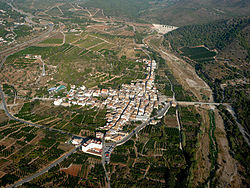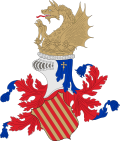This article needs additional citations for verification .(April 2024) |
Algar de Palancia | |
|---|---|
 | |
| Coordinates: 39°46′53″N0°21′58″W / 39.78139°N 0.36611°W | |
| Country | |
| Autonomous community | |
| Province | Valencia |
| Comarca | Camp de Morvedre |
| Judicial district | Sagunto |
| Government | |
| • Alcalde | Juan Emilio Lostado Gascó |
| Area | |
• Total | 13.20 km2 (5.10 sq mi) |
| Elevation | 204 m (669 ft) |
| Population (2024-01-01) [1] | |
• Total | 542 |
| • Density | 41.1/km2 (106/sq mi) |
| Demonym | Algarí/-ina |
| Time zone | UTC+1 (CET) |
| • Summer (DST) | UTC+2 (CEST) |
| Postal code | 46593 |
| Official language(s) | Valencian |
| Website | Official website |
Algar de Palancia is a municipality in the comarca of Camp de Morvedre in the Valencian Community, Spain.


